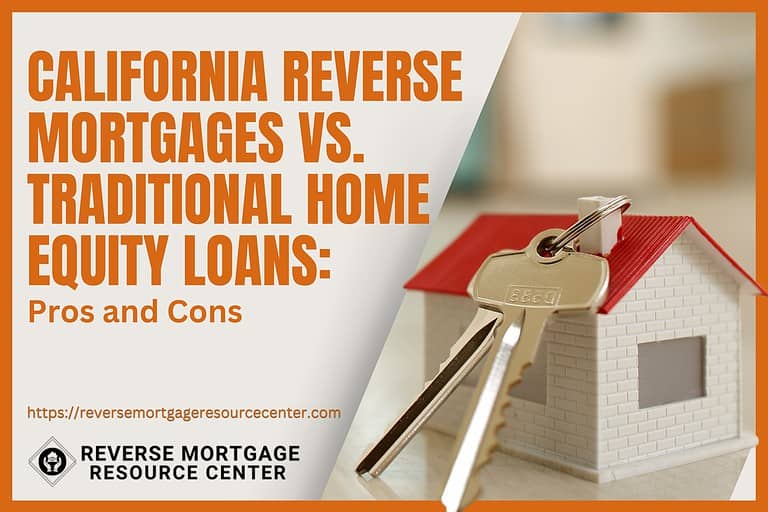Utah Reverse Mortgages: Disbursement Options and Insights
Retirement should be a period of leisure and relaxation, free of financial concerns. However, financial difficulties can loom big in the golden years for many seniors in Utah and nationwide. A reverse mortgage is a viable alternative that can provide much-needed assistance. This comprehensive essay will look at Utah reverse mortgages, focusing on disbursement alternatives and providing helpful information to help seniors make sound financial decisions.
Understanding Reverse Mortgages
What is a Reverse Mortgage?
A reverse mortgage allows the elderly to access the equity they’ve generated in their houses over time. Unlike regular mortgages, in which homeowners make monthly payments to the lender, a reverse mortgage disburses funds to the homeowner. This arrangement enables seniors to access a portion of their home’s equity without selling it or making monthly mortgage payments.
Eligibility for Reverse Mortgages in Utah
To be qualified for a reverse mortgage in Utah, you must meet the following requirements:
Age Requirement: You must be at least 62 years old to apply.
Homeownership: You must own your home outright or have significant equity.
Primary Residence: The residence in question must be your principal residence.
Financial Assessment: Lenders will assess your financial condition to guarantee you can handle property taxes, insurance, and maintenance fees.
Now that we’ve reviewed the basics, let’s look at the disbursement alternatives and insights related to Utah reverse mortgages.
Disbursement Options
When considering a reverse mortgage, it’s critical to understand the various disbursement alternatives. These options govern how you will get funds from your reverse mortgage, and your decision can substantially impact your financial status.
Lump Sum Disbursement
This option may be appropriate for seniors who require a large sum of money upfront to pay off a mortgage, cover medical expenditures, or make house upgrades. Remember that paying down the full loan in one lump sum may affect your eligibility for Medicaid or Supplemental Security Income (SSI), as it may reduce your asset limit.
Line of Credit
A line of credit works much like a traditional credit line, where you can draw funds as needed, up to the maximum limit set by your reverse mortgage. This option allows you to access funds when needed, and any unused amount of the credit line can increase over time, thus boosting your available funds in the future.
Monthly Disbursements
Reverse mortgage disbursements offer a consistent stream of funds that can help cover your living expenses. These disbursements can be made in the form of a tenure plan (for as long as you live in the home) or a term plan (for a set number of months). Monthly disbursements can give steadiness, but they aren’t always ideal if you need a substantial chunk of money immediately.
Combination of Options
Some reverse mortgage borrowers choose a mix of disbursement alternatives. They may, for example, accept a lump sum to cover immediate expenses and then establish a line of credit or receive monthly disbursements to assure continued financial support. Combining options can provide the best of both worlds, generating immediate funds while keeping future access.
Insights for Seniors Considering Reverse Mortgages
Now that we’ve looked at the distribution possibilities, let’s look at some key information that can help seniors make informed selections about reverse mortgages in Utah.
1. Consult with a HUD-Certified Counselor
It is strongly advised to consult with a Department of Housing and Urban Development (HUD)-certified counselor before continuing with a reverse mortgage. These experts may offer unbiased advice, ensuring you completely comprehend a reverse mortgage’s terms, fees, and potential repercussions. They can also aid you in weighing substitutes to a reverse mortgage, such as downsizing or applying for financial assistance.
2. Understand the Costs
While reverse mortgages might give financial relief, they have costs, such as origination fees, mortgage insurance payments, and interest. It is critical to understand these costs and how they can affect your loan balance over time. A counselor can assist you in navigating these expenses and explaining how they relate to your preferred disbursement method.
3. Maintain Financial Responsibility
You are still responsible for property taxes, homeowners insurance, and house maintenance, even if you have a reverse mortgage. Failure to meet these requirements may cause the loan to become due, potentially requiring the sale of your home. Budgeting for these costs is essential for a successful reverse mortgage experience.
4. Consider Your Long-Term Goals
Consider your long-term financial objectives and how a reverse mortgage will fit into your retirement plans. Do you intend to live in your current home for the rest of your life, or do you intend to relocate in a few years? Your objectives can influence the disbursement alternatives you choose and the overall viability of a reverse mortgage for your scenario.
5. Protect Your Heirs
If you intend to leave your house to your heirs, be aware that a reverse mortgage may impact the legacy you leave them. Your heirs may be required to repay the loan balance or sell the residence to settle the debt. Discuss these issues with your family and loved ones to avoid later shocks. You could also look at methods for reserving a portion of your home’s equity for your heirs.
6. Shop Around for Lenders
Not all reverse mortgage lenders provide the same terms and conditions. It’s a good idea to shop about, compare offers, and select a trustworthy lender with a history of fair and transparent dealings. Understanding your lender’s policies and ensuring they correspond with your financial goals before agreeing.
REVERSE MORTGAGE RESOURCE CENTER ~LIVE LIFE ON YOUR TERMS~
Our Lending Team has been serving our clients since 2004. We are passionate about serving our clients with integrity to help them achieve their financial goals.






